Good knitters make mistakes. Excellent knitters make mistakes. Even expert knitters make mistakes every now and then. And as long as you know how to fix your errors, it’s no big deal. Here we’ve outlined and explained how to fix some of the most common errors that plague beginners (as well as veterans) in the knitting world.
TWISTED STITCHES
Knit Side
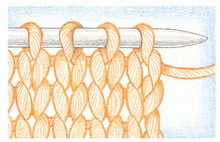
A twisted or backward stitch is created either by wrapping the yarn incorrectly on the previous row or by dropping a stitch and returning it to the needle backward.
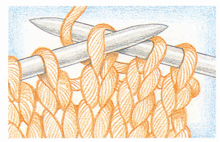
To correct the backward knit stitch, knit it through the back loop.
Purl Side
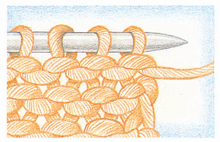
A backward purl stitch looks different from a regular purl stitch in that the back loop is nearer to the tip of the needle than the front loop.
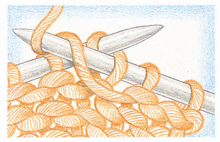
To correct the backward purl stitch, purl it through the back loop.
PICKING UP A DROPPED STITCH
Knit Side
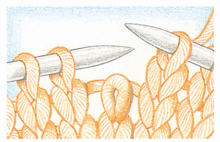
1. This method is used when a knit stitch has dropped only one row. Work to where the stitch was dropped. Be sure that the loose strand is behind the dropped stitch.
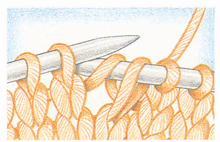
2. Insert the right needle from front to back into the dropped stitch and under the loose horizontal strand behind.
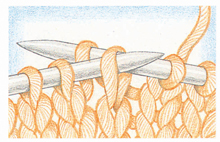
3. Insert the left needle from the back into the dropped stitch on the right needle, and pull this stitch over the loose strand.
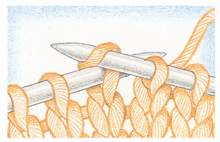
4. Transfer this newly made stitch back to the left needle by inserting the left needle from front to back into the stitch and slipping it off the right needle.
Purl Side
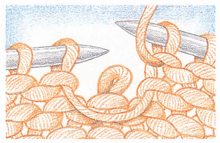
1. This method is used when a purl stitch has been dropped only one row. Work to the dropped purl stitch. Be sure that the loose horizontal strand is in front of the dropped stitch.
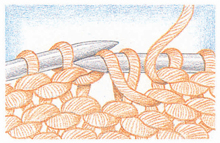
2. Insert the right needle from back to front into the dropped stitch, and then under the loose horizontal strand.
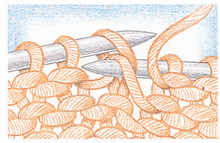
3. With the left needle, lift the dropped stitch over the horizontal strand and off the right needle.
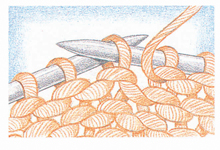
4. Transfer the newly made purl stitch back to the left needle by inserting the left needle from front to back into the stitch and slipping it off the right needle.
Picking Up a Running Stitch
Knit Side
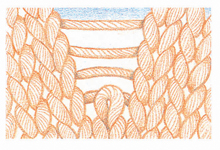
A running stitch is one that has dropped more than one row. It is easiest to pick it up with a crochet hook. For a knit stitch, be sure the loose horizontal strands are in back of the dropped stitch.
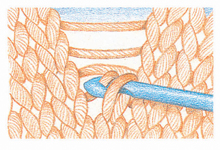
Insert the hook into the stitch from front to back. Catch the first horizontal strand and pull it through. Continue up until you have worked all the strands. Place the newest stitch on the left needle, making sure it is not backward.
Purl Side
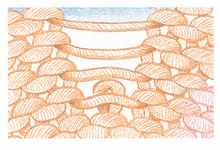
Before picking up a dropped purl stitch several rows below, be sure that the loose horizontal strands are in front of the stitch.
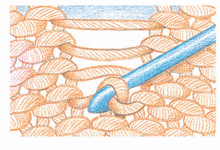
Insert the hook into the stitch from back to front. Pull the loose strand through the stitch. Continue up until you have worked all the strands. Place the newest stitch on the left needle, making sure it is not backward.
Incomplete Stitches
Knit Side
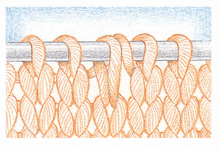
An incomplete knit or purl stitch is one where the yarn is wrapped around the needle but not pulled through the stitch. The illustration above shows an incomplete stitch from the previous purl row.
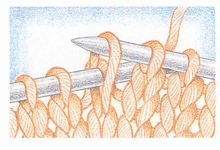
Work to the incomplete stitch. Insert the right needle from back to front into the stitch on the left needle and pull it over the strand and off the needle.
Purl Side
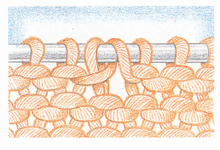
This illustration shows an incomplete stitch from the previous knit row.
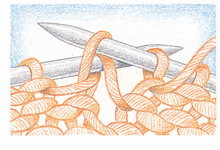
Insert the right needle into the stitch on the left needle and pull it over the strand and off the needle.
An Extra Stitch at the Edge
Knit Side
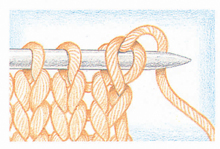
If you bring the yarn back over the top of the needle at the beginning of the knit row, the first stitch will have two loops instead of one, as shown.
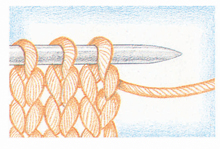
To avoid creating this extra stitch, keep the yarn under the needle when taking it to the back to knit the first stitch.
Purl Side
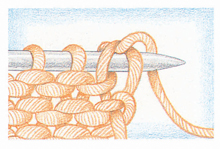
At the beginning of a purl row, if the yarn is at the back, and then brought to the front under the needle, the first stitch will have two loops instead of one, as shown.
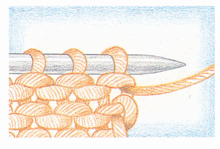
To avoid making these two loops, the yarn should be at the front before you purl the first stitch.
